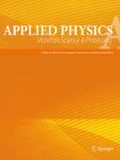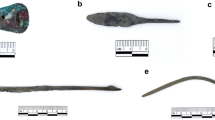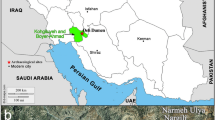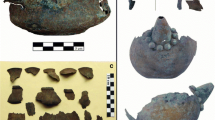Abstract
A large number of bronze artefacts found during archaeological excavations carried out in Italy in different contexts have been studied. Their chemical composition and metallurgical features have been determined by the combined use of different analytical surface and bulk techniques, such as optical microscopy (OM), scanning electron microscopy with energy dispersive X-ray micro-analysis (SEM-EDS), X-raydiffraction (XRD) and X-ray photoelectron spectroscopy (XPS). The study of the corrosion products grown on the archaeological Cu-based artefacts and of their metallurgical features has revealed the quite ubiquitous and nearly constant presence of chlorine as the main corroding agent, and the different structures of the alloys. This information has been used to produce reference Cu-based alloys, whose chemical composition and micro-chemical structure is similar to that of the ancient alloys, and to propose the guidelines for carrying out the accelerated degradation tests to produce corroded samples for testing corrosion inhibiting products. The proposed tests were based on soil, chemical and (chemical+soil)-induced degradation, and the micro-chemical structure of the artificially produced corrosion layers has been compared to those grown on archaeological artefacts during burial. The comparison shows that the (chemical+soil)-induced degradation produces “patinas” that are similar to those grown on archaeological artefacts from a chemical, structural and micro-morphological point of view.
Similar content being viewed by others
References
D.A. Scott, J. Am. Inst. Conserv. 29, 193 (1990)
I.D. MacLeod, ICCM Bulletin, ICC M Inc., Canberra, VII (1981) p. 16
E. Mattsson, A.G. Nord, K. Tronner, M. Fjaestad, A. Lagerlof, I. Ullen, G.C. Borg, Konserverings-Tekniska studier, ed. by Gunnel Friberg (Stockholm 1996) p. 5.
D.A. Scott, J. Am. Inst. Conserv. 33, 1 (1994)
JCPDS Powder Diffraction File, Int. Centre for Diffraction Data, Swarthmore
C.D. Wagner, L.E. Davis, W.M. Riggs, Surf. Interface Anal. 2, 53 (1986)
Author information
Authors and Affiliations
Corresponding author
Additional information
PACS
68.55.Jk; 68.35.Dv; 68.37.Hk; 68.55.Nq; 81.05.Ba
Rights and permissions
About this article
Cite this article
Casaletto, M., De Caro, T., Ingo, G. et al. Production of reference “ancient” Cu-based alloys and their accelerated degradation methods. Appl. Phys. A 83, 617–622 (2006). https://doi.org/10.1007/s00339-006-3545-9
Received:
Accepted:
Published:
Issue Date:
DOI: https://doi.org/10.1007/s00339-006-3545-9




